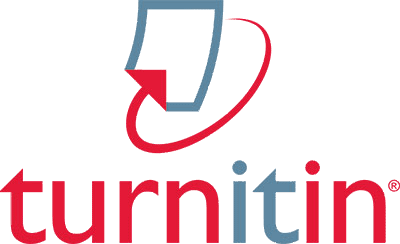An Overview of Impulse Purchase Behavior on F-Commerce Platform in Sumatera, Indonesia
Abstract
This study aims to examine the effect of f-commerce browsing and f-commerce usage intensity of f-commerce impulse purchase mediated by urge to purchase on users of the Facebook. The data was collected from 197 respondents who had made impulsive purchases using the Facebook. The data collection technique used a questionnaire that was distributed online through social media. The research measurement in this questionnaire consists of 16 questions to the respondent. Data analysis in this study used SEM-AMOS to see the relationship between variables. the research showed that; (1) f-commerce browsing has a positive effect on f-commerce impulse purchase; (2) f-commerce usage intensity has a positive effect on f-commerce impulse purchase; (3) f-commerce browsing has a positive effect on urge to purchase; (4) f-commerce usage intensity has a positive effect on f-commerce urge to purchase; (5) urge to purchase has a positive effect on f-commerce impulse purchase; (6) urge to purchase mediates the effect of f-commerce browsing on f-commerce impulse purchase; (7) urge to purchase mediates the f-commerce usage intensity on f-commerce impulse purchases.
Downloads
References
Baron, R.M. & Kenney, D.A. (1986). The moderator-mediator variable distinction in social psychological research: Conceptual, strategic, and statistical considerations. Journal of Personality and Social Psychology, 51(6), 1173–1182.
Beatty, S. E., & Elizabeth Ferrell, M. (1998). Impulse buying: Modeling its precursors. Journal of Retailing, 74(2), 161–167. https://doi.org/10.1016/s0022-4359(98)90009-4
Bloch, P. H., Ridgway, N. M., & Sherrell, D. L. (1989). Extending the concept of shopping: An investigation of browsing activity. Journal of the Academy of Marketing Science, 17(1), 13–21. https://doi.org/10.1007/BF02726349
Byun, 2011. (2011). Consumer Response to Seller-Induced Perishability : 11(2), 53–64.
Chen, J. V., Su, B. C., & Widjaja, A. E. (2016). Facebook C2C social commerce: A study of online impulse buying. Decision Support Systems, 83, 57–69. https://doi.org/10.1016/j.dss.2015.12.008
Chung, N., Song, H. G., & Lee, H. (2017). Consumers’ impulsive buying behavior of restaurant products in social commerce. International Journal of Contemporary Hospitality Management, 29(2), 709–731. https://doi.org/10.1108/IJCHM-10-2015-0608
Floh, A., & Madlberger, M. (2013). The role of atmospheric cues in online impulse-buying behavior. Electronic Commerce Research and Applications, 12(6), 425–439. https://doi.org/10.1016/j.elerap.2013.06.001
Foroughi, A., Buang, N. A., Che Senik, Z., & Sadat Hajmisadeghi, R. (2013). Impulse Buying Behaviour and Moderating Role of Gender among Iranian Shoppers. Journal of Basic and Applied Scientific Research, 3(4), 760–769.
Hair, J., Black, F., C, W., Babin, B. J., & Anderson, R. E. (2010). Multivariate Data Analysis (7th Editio). Pearson Prentice Hall.
Horrigan, J.B. (2002). “New Internet Users: What They Do Online, What They Don’t and Implications for the Net’s Future.” Pew internet and American life project. pg. 1-27.
Huang, Z., & Benyoucef, M. (2015). User preferences of social features on social commerce websites: An empirical study. Technological Forecasting and Social Change, 95, 57–72. https://doi.org/10.1016/j.techfore.2014.03.005
Jin, H. S. (2003). Compounding consumer interest: Effects of advertising campaign publicity on the ability to recall subsequent advertisements. Journal of Advertising, 32(4), 29–41. https://doi.org/10.1080/00913367.2003.10639145
Kazempour, Y. dan Lotfizadeh, F. (2017). The Impact of Situational Factors (Store, Personal) on Urge to Buy Impulsively and Impulsive Buying Behavior. European Journal of Business and Innovation Research 5(4): 12–27
Khan, I., Ghazanfar, S and Abdullah, M. (2020) “Does social media browsing and usage intensity impact impulse purchase behavior of consumer? a moderating role of gender in f-commerce impulse purchase” Hamdardslamicus, Vol. 43 No. 2, 60-75.
Lee, G. Y., & Yi, Y. (2008). The Effect of Shopping Emotions and Perceived Risk on Impulsive Buying : The Moderating Role of Buying Impulsiveness Trait. Seoul Journal of Business, 14(2), 67–92.
Lee, J. A., & Kacen, J. J. (2008). Cultural influences on consumer satisfaction with impulse and planned purchase decisions. Journal of Business Research, 61(3), 265–272. https://doi.org/10.1016/j.jbusres.2007.06.006
Leong et al., 2017. (2017). Understanding impulse purchase in Facebook commerce: does Big Five matter? Internet Research, 27(4), 786–818. http://10.0.4.84/IntR-04-2016-0107%0Ahttp://search.ebscohost.com/login.aspx?direct=true&db=llf&AN=124365795&site=ehost-live
Leong, L. Y., Jaafar, N. I., & Sulaiman, A. (2018). What triggers impulse purchase in Facebook commerce? International Journal of Mobile Communications, 16(4), 459–492. https://doi.org/10.1504/IJMC.2018.092679
Moe, W. W. (2003). Buying, searching, or browsing: Differentiating between online shoppers using in-store navigational clickstream. Journal of Consumer Psychology, 13(1–2), 29–39. https://doi.org/10.1207/s15327663jcp13-1&2_03
Overby, J. W., & Lee, E. J. (2006). The effects of utilitarian and hedonic online shopping value on consumer preference and intentions. Journal of Business Research, 59(10–11), 1160–1166. https://doi.org/10.1016/j.jbusres.2006.03.008
Park, E. J., Kim, E. Y., Funches, V. M., & Foxx, W. (2012). Apparel product attributes, web browsing, and e-impulse buying on shopping websites. Journal of Business Research, 65(11), 1583–1589. https://doi.org/10.1016/j.jbusres.2011.02.043
Prastia, F. E. (2013). Pengaruh Shopping Lifestyle, Fashion Involvement dan Hedonic Shopping Value terhadap Impulse Buying Behaviour pelanggan toko Elizabeth Surabaya. Jurnal Ilmiah Mahasiswa Manajemen, 2(4), 1–6. http://journal.wima.ac.id/index.php/JUMMA/article/view/424
Prihatini, R., & Susanto, S. (2015). Pengaruh Motif Hedonis Dan Browsing Terhadap Pembelian Impulsif Pada Pembelian Online Produk Fashion. Jurnal Manajemen Bisnis, 6(2), 351–375.
Rook, D. W. (1987). The Buying Impulse. Journal of Consumer Research, 14(2), 189. https://doi.org/10.1086/209105
Rowley, J. (2002). ‘Window’ shopping and browsing opportunities in cyberspace. Journal of Consumer Behaviour, 1(4), 369–378. https://doi.org/10.1002/cb.81
Sharma, P., Sivakumaran, B., & Marshall, R. (2010). Impulse buying and variety seeking: A trait-correlates perspective. Journal of Business Research, 63(3), 276–283. https://doi.org/10.1016/j.jbusres.2009.03.013
Stern, H., & Re-, S. (2012). the Significance of Metalworking. Acta Archaeologica, 83(1), 72–72. https://doi.org/10.1111/j.1600-0390.2012.00570.x
Taslim dan Septiana. (2011). Pengaruh Shopping Lifestyle, Fashion Involvement dan Hedonic Shopping Value terhadap Impulse Buying Behaviour Pelanggan Toko Elizabeth Surabaya. Jurnal Ilmiah Mahasiswa Manajemen, 2 (4).
Verhagen, T., & Van Dolen, W. (2011). The influence of online store beliefs on consumer online impulse buying: A model and empirical application. Information and Management, 48(8), 320–327. https://doi.org/10.1016/j.im.2011.08.001
Wilcox, K., Kramer, T., & Sen, S. (2011). Indulgence or self-control: A dual process model of the effect of incidental pride on indulgent choice. Journal of Consumer Research, 38(1), 151–163. https://doi.org/10.1086/657606
Wilcox, K., & Stephen, A. T. (2013). Are close friends the enemy? online social networks, self-esteem, and self-control. Journal of Consumer Research, 40(1), 90–103. https://doi.org/10.1086/668794
Xu, H., Zhang, K. Z. K., & Zhao, S. J. (2020). A dual systems model of online impulse buying. Industrial Management and Data Systems, 120(5), 845–861. https://doi.org/10.1108/IMDS-04-2019-0214
Zafar, A. U., Qiu, J., & Shahzad, M. (2020). Do digital celebrities’ relationships and social climate matter? Impulse buying in f-commerce. Internet Research, 30(6), 1731–1762. https://doi.org/10.1108/INTR-04-2019-0142
Zhang, Xiabing; Men, Jinqi; Yang, Feng; Gong, Xiuyuan (2019). Understanding impulse buying in mobile commerce: An investigation into hedonic and utilitarian browsing. International Journal of Information Management, 48(), 151–160. Doi:10.1016/j.ijinfomgt.2019.02.010
 This work is licensed under a Creative Commons Attribution-ShareAlike 4.0 International License.
This work is licensed under a Creative Commons Attribution-ShareAlike 4.0 International License.

















